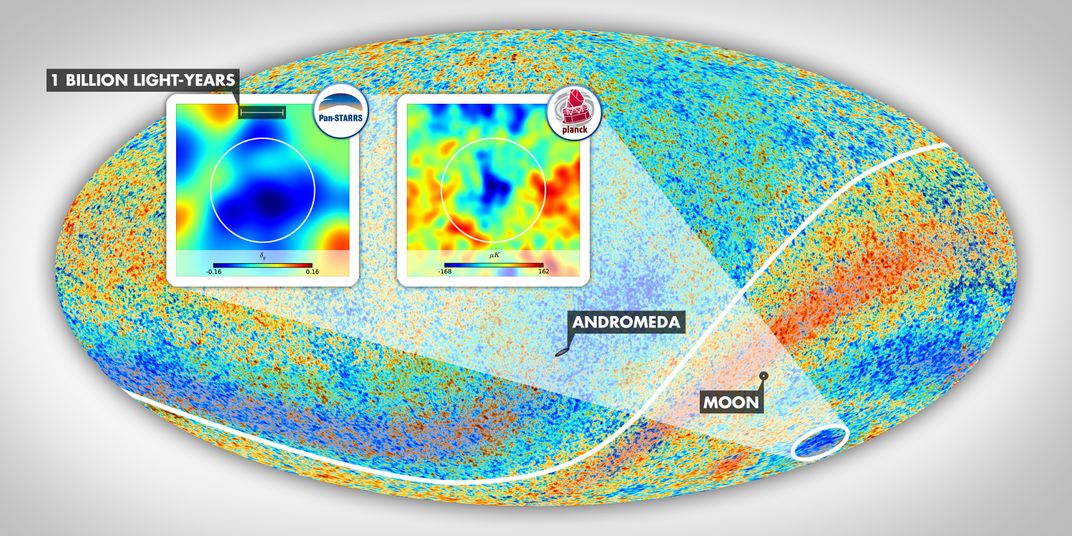What Created the Universe’s Cold Spot?
A super(void) explanation
The cold spot is a mystery astronomers have been trying to solve for about a decade. In 2004, a NASA satellite surveying the cosmic microwave background—the first light after the Big Bang—found an enormous cold spot, also observed later by the European Space Agency’s Planck satellite. While the temperature of the background radiation varies across the universe, this strangely cool spot was significantly larger than any other.

Many theories have been lobbed to explain it. Some astronomers think that the complex algorithms used to crunch the satellite data “created” it. A few think the cold spot can be explained by string theory’s idea of multiverses, in which a neighbor universe is touching ours.
But a paper published in the Monthly Notices of the Royal Astronomical Society in April suggests the cold spot is due to a supervoid in space. István Szapudi leads the team at the University of Hawaii at Manoa, which uses observations from the Pan-STARRS1 telescope in Haleakala, Maui, and NASA’s Wide-field Infrared Survey Explorer (WISE) satellite. Not only would the existence of the supervoid be more evidence that the universe is expanding—because light traveling through an expanding supervoid would lose energy as it exited, reading as a colder temperature—but, Szapudi says, it would be “the largest individual structure ever identified by humanity.”